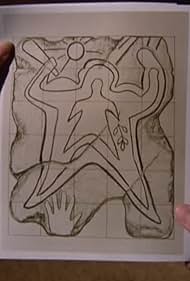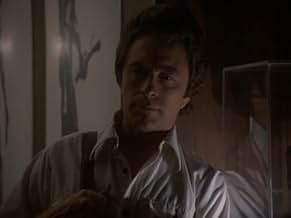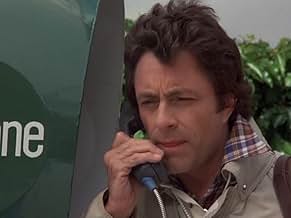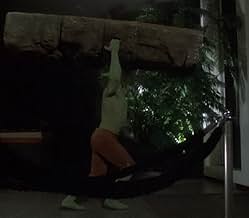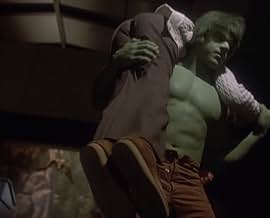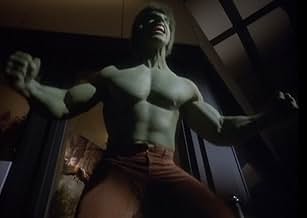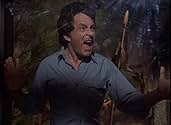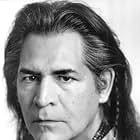David hops aboard an archaeological expedition. See, the head of the expedition has found a cave painting of a vaguely human-shaped figure with a much smaller human-shaped figure inside it holding a twig, and from this the professor has concluded that there must have existed a super-strong species of human in prehistoric times. David takes his theory one step further: This painting represents a prehistoric Hulk, and the twig is from a plant which cured him.
It's amazing how much one can deduce from crude cave paintings, isn't it? If your five-year-old daughter did the painting seen in this episode, you'd say, "Oh, that's beautiful, sweetheart," while peering at it and thinking, "Okay, those two crude shapes must be me and her, but what are those things we're holding and what are we doing with them?" But if it's a cave painting, it clearly is showing a prehistoric man who transforms into a green monster when he gets angry and is curing himself of this condition by eating a leafy plant.
I suppose I should let that one slide, since it's common enough in genre television, and from my limited archaeological readings I have a sinking suspicion that such leaps of logic are not too far removed from the way archaeology is practiced in real life. But this episode still feels oddly lacking the usual realism of the series.
At the same time, though, it's a very routine episode: David gets a job, makes friends, they run afoul of criminals, and Hulk conveniently saves the day just as David would. It's mostly enjoyable, and the writers do a good job of emphasizing that the villains (a gang of disgruntled Native Americans) have legitimate grievances without suggesting that their actions are justified. But reflecting on it, I find relatively little to like about this ep.
